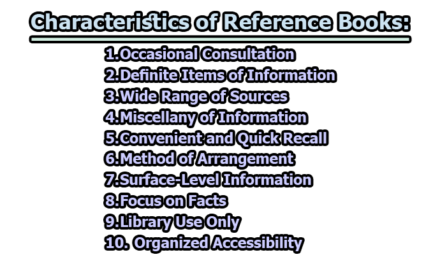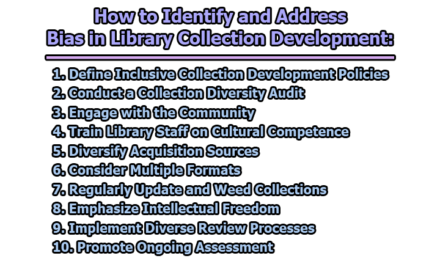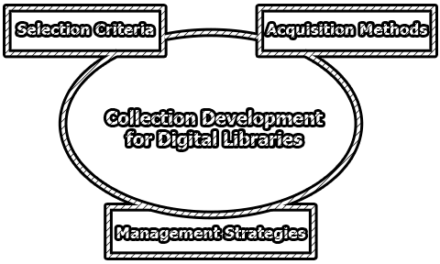Finding New Ideas through Exploring a Library with a Tour:
In today’s fast-paced world, where information is just a click away, libraries might seem like a relic of the past. But don’t be too quick to dismiss them. Libraries hold a world of knowledge, stories, and experiences that can’t be replicated online. And one of the most exciting ways to uncover this treasure trove is by embarking on a library tour. Whether you’re a student, a book lover, or just curious about what libraries offer, a library tour promises more than you might expect. So, let’s delve into the enchanting experience of finding new ideas through exploring a library with a tour.
What is a Library Tour?
A library tour is a special journey that you take inside a library to learn all about it. It’s like having a guide show you around and telling you about different places in the library. During the tour, you get to see where the books are, how to use computers for learning and even discover cool things like special collections and quiet places to read. It’s a fun way to understand how the library works and all the exciting things you can do there.
The Magic of a Library Tour:
A library tour is not merely a guided walk; it’s a curated expedition into a world of imagination, discovery, and enlightenment. It’s like stepping into a portal that transports you to a realm where the tangible and the intangible converge. The journey begins the moment you set foot in the library, where a palpable sense of anticipation envelops you. The library tour is a sensory experience that engages your mind and heart, much like an artist’s palette of colors waiting to be blended into a masterpiece.
Getting to Know the Library:
Your library tour commences at the entrance, where you’re greeted by welcoming faces eager to share the library’s history, its purpose, and the treasures that lie within. This introduction isn’t merely a formality; it’s an invitation to embark on an intellectual adventure. As you progress, you’ll find that a library is more than just shelves lined with books; it’s a living organism that thrives on the diversity of its offerings.
The Journey of Discovery:
Guided by experts, often experienced librarians, the tour is a carefully choreographed dance through the different sections of the library. Each stop on the tour unveils a new facet of knowledge and human ingenuity. You’ll visit the tranquil corners perfect for quiet contemplation, the well-lit study spaces designed for focused learning, and the tech-savvy zones that bridge the traditional with the contemporary. However, it’s not only the physical spaces that captivate; it’s the stories woven into the very fabric of the library.
Exploring Hidden Treasures:
Among the gems of a library are its special collections. These collections hold rare manuscripts, historic artifacts, and books that have witnessed the passage of time. The tour takes you behind the scenes, offering a glimpse into the cultural tapestry of human history. The library is not confined to the past; it evolves to embrace the digital age. Technology hubs, multimedia corners, and e-resources are introduced on the tour, showcasing how libraries adapt while maintaining their core essence.
Connecting with the Community:
Libraries have always been community centers, and the tour highlights this aspect. Community spaces come alive as you explore rooms meant for workshops, discussions, and events. It’s a reminder that a library is not just a repository of books; it’s a hub for people to connect, collaborate, and exchange ideas.
A typical library tour will include a visit to the following areas:
A typical library tour is carefully curated to provide participants with a comprehensive overview of the library’s offerings and spaces. As visitors traverse through the library’s halls, they are introduced to a variety of areas that collectively contribute to the library’s role as a hub of knowledge, learning, and community engagement. Here are some of the key areas that a typical library tour may include:
1. Entrance and Welcome Area: The library tour begins with a warm welcome at the entrance. Here, you’re introduced to the tour’s purpose and itinerary. Guides provide insights into the library’s inception, its connection to the community, and the services it offers. This initial interaction sets the tone for the entire tour, offering a glimpse into the library’s significance beyond its physical space.
2. Circulation Desk: As you move forward, you encounter the bustling circulation desk. This central hub is where you check out and return materials. During the tour, guides explain the library’s borrowing policies, walk you through the process of accessing your accounts, and introduce you to the staff who ensure the smooth functioning of the library’s operations.
3. Reading and Study Areas: Libraries are synonymous with spaces for quiet reading and focused study. The tour takes you through these areas, showcasing the library’s commitment to providing diverse learning environments. From cozy corners that encourage solitary reflection to group study rooms that promote collaborative learning, you’ll experience the various ways the library accommodates different learning styles.
4. Reference and Research Services: A significant stop on the tour is the reference desk, where librarians offer valuable research assistance. Here, you’ll learn about accessing databases, using search tools effectively, and finding credible sources for your inquiries. This segment underscores the role of librarians as guides in your quest for accurate and reliable information.
5. Children’s and Young Adult Sections: Libraries cater to learners of all ages, and the tour acknowledges this by leading you to the dedicated children’s and young adult sections. Here, you’ll discover a world of age-appropriate books, educational resources, and interactive activities designed to ignite young minds and cultivate a lifelong love for learning.
6. Technology and Digital Resources: Modern libraries seamlessly integrate technology, a facet that’s highlighted during the tour. You’ll be introduced to technology hubs where you can access online catalogs, e-books, e-journals, databases, and other digital resources. This segment showcases the library’s evolution in response to the digital age, bridging the gap between traditional and modern learning.
7. Special Collections and Archives: If your library is home to special collections, rare manuscripts, or archival materials, the tour will provide a peek into these unique treasures. Guides will illuminate the historical and cultural significance of these items, connecting you with the past and showcasing the library’s dedication to preserving heritage.
8. Exhibition Spaces: Many libraries host temporary exhibitions or displays that offer insights into specific themes, cultures, or ideas. The tour might take you through these exhibition spaces, revealing the library’s commitment to promoting cultural awareness and providing platforms for intellectual exploration.
9. Multimedia and Creative Spaces: As libraries evolve, they accommodate diverse interests. The tour showcases these adaptations by leading you to multimedia labs, recording studios, or maker spaces. These areas encourage creativity, offering you opportunities to explore your artistic inclinations or develop practical skills.
10. Community Engagement Zones: A significant aspect of libraries is their role as community hubs. The tour takes you to spaces where workshops, discussions, and events take place. These areas emphasize the library’s function as a place where individuals can connect, collaborate, and engage in meaningful conversations.
11. Quiet Zones and Relaxation Areas: Amid the dynamic activity, libraries provide spaces for quiet reflection. The tour might guide you to these havens of tranquility, offering a peaceful environment for contemplation, meditation, or relaxation.
12. Library Café or Lounge: As the tour nears its end, you might find yourself in a library café or lounge area. This is a place to unwind, socialize, and discuss your impressions of the tour with fellow participants. It’s a reminder that libraries cater not only to intellectual pursuits but also to social connections.
Benefits of Taking a Library Tour:
Taking a library tour offers a multitude of benefits for individuals of all ages and backgrounds. Whether you’re a student, a researcher, a community member, or simply someone curious about the world of knowledge, embarking on a library tour can prove to be an enlightening and enriching experience. Here are some of the key benefits of taking a library tour:
a. Orientation and Familiarity: For those stepping into a library for the first time, the tour serves as an invaluable orientation. Navigating a library’s vast array of sections and resources can be overwhelming, but the tour provides an overview of the library’s layout, key areas, and services. It’s like receiving a roadmap to an uncharted territory, enabling you to confidently explore the library’s offerings in the future.
b. Discovering Resources: The tour introduces you to the diverse range of resources that libraries offer. From traditional books and periodicals to cutting-edge digital databases, e-books, and multimedia resources, the library is a treasure trove waiting to be explored. Learning how to access and effectively utilize these resources equips you with tools that extend far beyond the tour.
c. Building Effective Research Skills: Librarians, who often lead these tours, share valuable insights into research strategies and techniques. These skills extend beyond the library’s walls, empowering you to navigate the vast landscape of information available both online and offline. Learning how to search for information, evaluate sources, and conduct comprehensive research lays the foundation for critical thinking and informed decision-making.
d. Personalized Assistance: Library tours are usually guided by knowledgeable librarians who offer personalized assistance. They answer your questions, offer guidance tailored to your interests, and provide recommendations based on your needs. This individualized interaction ensures that you understand how to make the most of the library’s services and resources, setting you up for success in your endeavors.
e. Understanding Services: A library is more than a repository of books; it’s a hub of services designed to support various learning styles and preferences. The tour introduces you to services such as interlibrary loans, reference assistance, technology support, and more. Knowing about these services saves you time and effort when seeking help or guidance in the future.
f. Cultural and Historical Context: Libraries often have a rich history and cultural significance within their communities. The tour might offer insights into the library’s architectural features, its historical relevance, and its role in preserving cultural heritage. By understanding the context, you develop a deeper appreciation for the library’s role as a guardian of collective knowledge.
g. Inspiration and Creativity: Libraries are not just spaces for learning; they are also creative hubs that inspire imagination and innovation. Exploring various sections, such as makerspaces or creative zones, can spark your creativity, encouraging you to experiment with new ideas, skills, and modes of expression.
h. Community Engagement: Library tours showcase spaces designed for community engagement, workshops, and events. Participating in these activities offers you a chance to connect with like-minded individuals who share your interests. It transforms the library into a social hub where intellectual discussions, collaborative projects, and lifelong friendships can flourish.
i. Enhancing Learning Across Disciplines: Whether you’re a student pursuing formal education or a lifelong learner driven by curiosity, a library tour exposes you to a wide range of subjects and disciplines. It piques your interest in areas you might not have considered before, encouraging you to delve deeper into unfamiliar subjects and broaden your intellectual horizons.
j. Empowerment Through Information: At its core, a library tour empowers you with the ability to navigate through the sea of information effectively. By learning how to discern credible sources, you gain the skills to make informed decisions in academic, professional, and personal contexts. This empowerment elevates your ability to contribute meaningfully to discussions and debates.
k. Promoting Literacy and Education: Library tours often emphasize the importance of literacy and education, especially in younger participants. Engaging with the library’s resources and witnessing the wealth of knowledge it holds can inspire a love for reading and learning among children and young adults, setting the stage for a lifelong journey of intellectual growth.
l. Cultivating Critical Thinking: As you explore different resources and learn to evaluate information critically, you develop essential skills for analyzing, interpreting, and synthesizing knowledge. These critical thinking skills are indispensable in a world where information is abundant yet requires careful discernment.
m. Networking Opportunities: A library tour isn’t just about the physical space; it’s also about the people you meet along the way. Participating in a library tour introduces you to fellow learners, researchers, and community members who share similar interests. These connections can lead to valuable collaborations, discussions, and even friendships that extend beyond the tour. As you engage in conversations during the tour, you might discover new perspectives, exchange ideas, and create a network of like-minded individuals who inspire and support your intellectual journey.
n. Instilling Lifelong Learning: The benefits of a library tour extend far beyond the guided experience itself. By showcasing the diverse resources, services, and opportunities available, a library tour instills a love for lifelong learning. It sets the stage for a continuous quest for knowledge and personal growth. Long after the tour concludes, you’ll find yourself returning to the library’s welcoming embrace to explore new topics, delve deeper into subjects of interest, and engage with the evolving landscape of information and ideas.
o. Bridging Generations: A library is a space where generations converge, sharing a common passion for learning and exploration. Library tours bridge generational gaps by creating a shared experience that appeals to individuals of all ages. Parents, grandparents, and children can embark on a library tour together, fostering a sense of unity and mutual understanding. This intergenerational interaction celebrates the value of learning across different life stages, nurturing a culture of curiosity and intellectual exchange within families and communities.
In conclusion, a library tour isn’t just a walk through shelves and spaces; it’s like a magical journey that helps you in many ways. You get to know the library, find cool resources, and learn how to search for information. Meeting librarians and other learners is great for making friends and finding out new things. Even after the tour ends, the library’s doors stay open for you to keep on learning and exploring. So, if you’re curious about the world or want to grow smarter, a library tour is the perfect way to start this wonderful journey.
Frequently Asked Questions (FAQs):
What is a library tour, and why should I consider taking one?
A library tour is a guided journey through a library’s different sections and offerings. It’s a chance to learn about the resources, services, and spaces available to you. Taking a library tour can help you discover new ideas, learn about various subjects, and make the most of what the library has to offer.
How can exploring a library with a tour help me find new ideas?
Library tours introduce you to a variety of resources, from books to digital databases. By seeing the different sections and talking to librarians, you can uncover topics and areas you might not have thought about before. Exploring the library’s collections and learning spaces can spark your curiosity and inspire you to think creatively.
What can I expect to see during a library tour?
Library tours typically include visits to different parts of the library, such as reading areas, study spaces, reference desks, and special collections. You’ll learn how to use technology to find information, discover hidden treasures in the library’s archives, and explore spaces designed for quiet contemplation and collaboration.
Can a library tour help me with my research or school projects?
Absolutely! Library tours often include information about research services and resources. Librarians can show you how to find reliable sources for your projects, navigate databases, and access academic journals. Learning about these tools during a tour can enhance your research skills and make your school work more effective.
I’m not a student. Is a library tour still relevant to me?
Definitely! Library tours are for everyone, regardless of age or background. Whether you’re a lifelong learner, a parent interested in children’s resources, or someone looking to expand your horizons, a library tour can introduce you to resources and activities that match your interests.
How can a library tour inspire my creativity?
Libraries aren’t just about books; they often have creative spaces like maker spaces or multimedia labs. During a tour, you might discover areas where you can experiment with technology, create art, or even record podcasts. These spaces can ignite your imagination and encourage you to explore new ways of expressing yourself.
Can I bring my children along on a library tour?
Absolutely! Many libraries welcome families on tours. It’s a great opportunity for children to learn about books, reading, and the exciting things libraries have to offer. Plus, they can explore age-appropriate sections designed to engage young minds and promote a love for learning.
Do I need to schedule a library tour in advance?
It’s a good idea to check with your local library to see if they offer scheduled tours. Some libraries have regular tour times, while others might require you to book in advance. This ensures that a knowledgeable guide is available to show you around and answer your questions.
How long does a library tour usually last?
Library tour durations can vary. Some might be as short as 30 minutes, while others could last an hour or more. The length often depends on the size of the library, the areas covered in the tour, and the depth of information shared by the guide.
Is there a cost associated with library tours?
In most cases, library tours are free of charge. Libraries usually offer tours as part of their mission to engage and educate the community. However, it’s a good idea to check with your specific library to confirm if there are any fees or requirements.

Former Student at Rajshahi University










